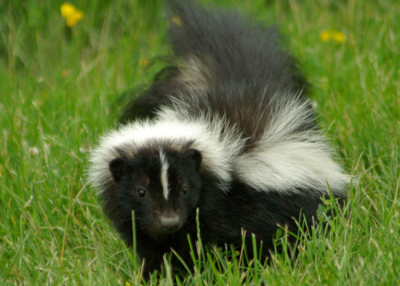Identification
Skunk
When you think of a skunk, the first thing that comes to mind is the furry black and white animal with an unmistakable bushy tail. However, skunks have another distinguishing habit: they can wreak havoc with their smelly spray.
Beyond these clear attributes, there are also a variety of skunks. While they are different in looks, size, and color, they share a lot of things in common: damage, behavior, etc.
Skunk Species
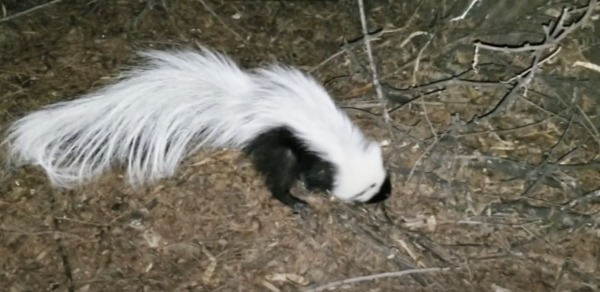
The Hooded Skunk
The hooded skunk looks more like the popular striped skunk, but the white of their coat looks more like a hood. It runs along the top of their heads to the back of their necks. This species of skunk is found in the southwestern part of the United States, all the way to Costa Rica.
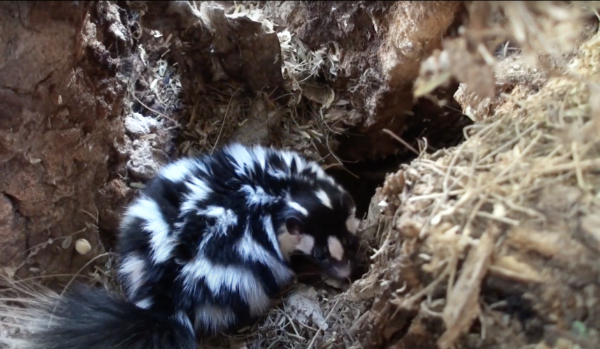
The Spotted Skunk
The spotted skunk species is easily identified with the white and black skunk, but instead of actual spots, it has a swirled color. You won't find this species in the northeast. This is because they are native to parts of Canada and Central America.
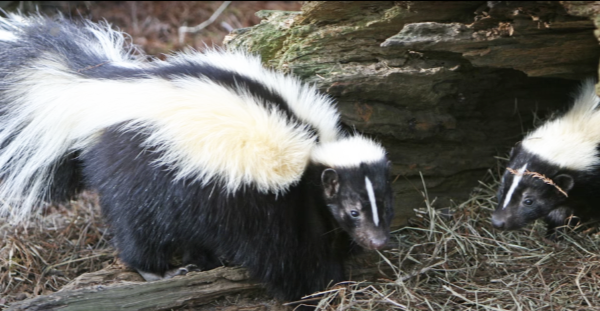
The Striped Skunk
The striped skunk is the species that many people are familiar with. These are found mostly in the North, the East, and are easily identified by their black fur, which shows swirls of white stripes.
Sounds
The major way homeowners sense the presence of skunks are through their smell; however, they do make sounds that can be identified. Since these pests are known for burrowing under sheds and homes, and almost always searching for food in garages, their sound can be heard by residents. Their sounds range from vocalization to scratching and stomping.
It's no news that skunks are quiet animals, but they also communicate by making a sound. When skunks are angry, they coo, growl, squeal or hiss. It is usually common for the lactating or pregnant females to be aggressive towards the male, always vocalizing or stamping their front feet. Homeowners that notice hissing or pouncing may have a female pregnant skunk living close. Their sounds might also include tearing, tapping, or even scratching, which is, in most cases, caused by their straight long and strong claws. These pests are known to be more active at night, which makes it possible for residents to hear their noises after dark.
Droppings
Skunk feces can be commonly found closer to their den. If you have a skunk living close to you, then there is a chance that you might find their droppings or waste close by. Skunk feces are usually scattered and not well-formed. It can be mushy but also show signs that they have been feeding on insects. The size of the skunk poop is about the size of that of a cat, but not as well-formed.
Their poop can be mushy, crumbly, or pasty. However, you can tell if a skunk is living close to you with their droppings. The best clue is their odor; you can't mistake it for any other pest.
At the same time, there are some problems that might arise in human as a result of skunk poop. Popularly known as Salmonella and leptospirosis – both of them can be very dangerous, and are things that you are going to need to worry about when you encourage this animal to leave.
Tracks
This is another clue to determine if skunks are living close by. Their tracks can be easily recognized, and can be found in their habitats: fields, farmlands, deserts, open woodlands, suburbs and parks, usually not far from water.
Just like bears and raccoons, skunks walk with their feet flat to the ground. Their foot has five toes on the front and five at the back. They have tracks that look more like that of a miniature bear. The front feet of a skunk have long claws, which shows up as a dot ahead of their toes. The back foot, on the other hand, has a big heel pad that is long and rectangular. Their front heel pad is smaller and can appear as a single dot.
Damage
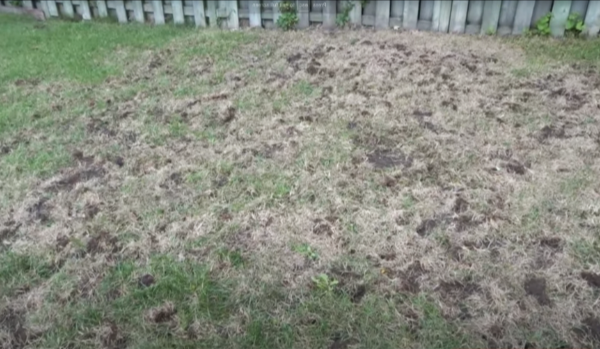
All types of skunks have serious problems with lawns. Be it the cat-sized striped skunk, or the smaller spotted skunk, they all cause the same damage. Almost all of the time, a skunk that is found in a residential area is there as a result of food, water, and readily available shelter.
They are most troublesome in the urban and suburban areas, as they can easily carry diseases and rabies. They also produce a powerful pungent spray and cause damage to lawns and gardens while on the lookout for food.
Skunks are nocturnal, so there is a chance that you won't see them spoiling your lawn. The first indication of a skunk in your area is your dog's barking and their thick odor.
In lawns, skunks always dig small cone-shaped holes which measures up to three to five inches across or upturn patches of earth. Unlike other animals, skunks are known to dig circular holes. Just like raccoons, skunks can also peel back sod in search of grubs and other insects.
